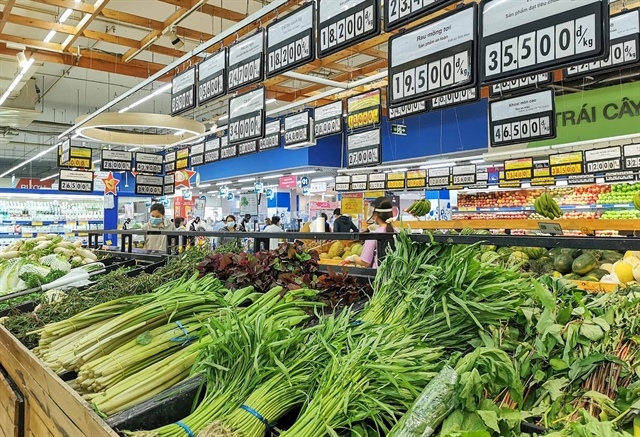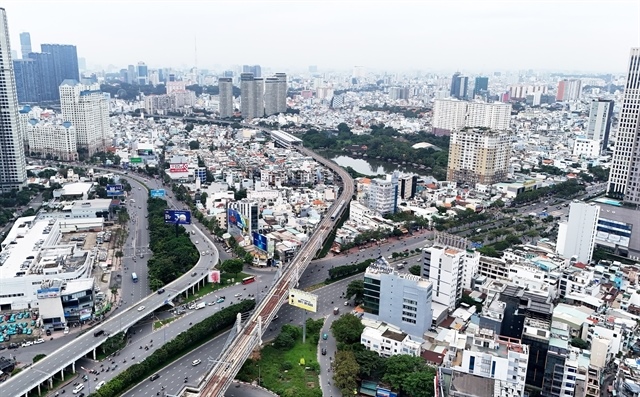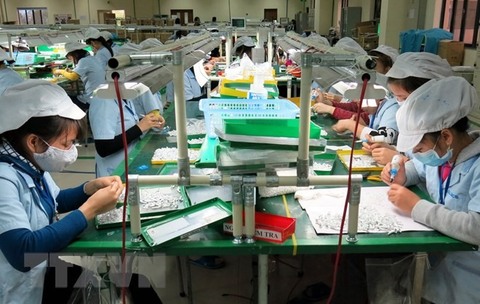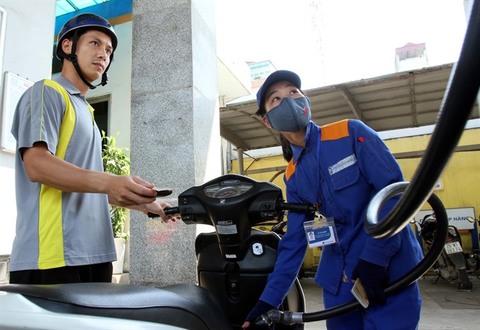E-commerce set for strong 2018
E-commerce set for strong 2018
The e-commerce market has taken off in Viet Nam thanks to booming internet usage and smartphone ownership, along with massive investments from key retail players, local media reported.
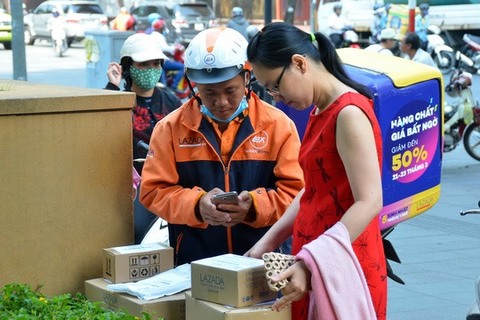
Viet Nam is one of the world’s fastest growing e-commerce countries, according to Lai Viet Anh, deputy director of Viet Nam E-commerce and Information Technology Agency (Vecita) under the Ministry of Industry and Trade.
“The country’s e-commerce is growing 35 per cent per year, 2.5 times faster than Japan,” Anh said.
The number of Vietnamese businesses capable of taking advantage of the internet and technology has grown 2.1 times faster than those with less use of the internet.
Small- and medium-d enterprises (SMEs) that spend more than 30 per cent of their budget on technological innovation are growing nine times faster than those spending less than 10 per cent of their budget.
Viet Nam’s e-commerce retail sales growth in the 2016-20 period is estimated at 20 per cent per year, and the country’s total retail e-commerce sales is expected to reach US$10 billion by 2020, Anh said.
However, e-commerce has faced several barriers deterring its sustainable development, including low consumer trust in products and services, and worries over online payment security.
In addition, most Vietnamese e-commerce websites provide only basic services, such as information about products and modes of payment. Services such as digital marketing optimisation and connecting online with offline sales need to be added.
Game-changing e-logistics
Logistics is expected to be a game changer for the Vietnamese e-commerce market in 2018 as new entrants are coming in, and existing operators are expanding to improve their delivery services.
This week, Nguyen Thi Thuy, a 29-year-old, said she prepared the evening meal for her family after returning home from work by ordering food from an online shop and waiting for delivery. It was the second time Thuy had shopped online this week.
“I can get all the packages delivered to my doorstep rather than shop and carry bags back on my motorcycle,” she said, noting that some e-commerce sites are providing high-quality products and services with free shipping so she prefers shopping online. This allows her to save time as well as grab some bargains.
Thuy is among many customers who have embraced the online shopping experience with its reliable and convenient delivery. According to Kantar Worldpanel, a global expert in shoppers’ behavior, the percentage of e-commerce shoppers grew from 5.4 per cent to 8.8 per cent in the largest four cities last year alone.
In light of this trend, many foreign logistics providers and e-commerce operators are making efforts not to miss an opportunity to provide e-logistics and meet the rapidly growing demand.
This year’s trends
As e-commerce is growing at a robust pace, logistics providers have to come up with new business models to deal with a soaring number of frequent and small- orders. They are investing in technology and infrastructure to counter the challenges from traffic congestion to failed deliveries, as well as the higher logistical costs in rural areas.
These dynamics will fuel some of 2018’s most important trends including customer collection points, designed for customers to receive an order from a designated collection point. Such collection points allow customers to pick up their orders at any time, without being required to wait at home.
DHL eCommerce launched a nationwide network of service points in Viet Nam last November, with a plan to expand up to over 1,000 outlets by the end of next year. Similar to the concept of customer collection points, the firm uses the shop-in-shop model by opening DHL eCommerce counters in grocery stores, minimarts, and coffee shops.
Giao Hang Nhanh Company (GHN) also plans to extend its network of customer collection points in local shops, convenience stores and buildings. The last-mile delivery startup plans to reach 1,500 outlets by the end of 2018.
Furthermore, investment in automation and related technologies will be the make-or-break moment for logistics companies in 2018.
In the third quarter of 2017, Lazada launched its first automated sorting centre in HCM City, with its second centre expected to be launched in the first quarter of 2018 in Ha Noi.
Lazada will also upgrade its existing sorting centre next year, tripling its sorting capacity.
Nguyen Tran Thi, CEO of GHN, said that GHN would invest in technology such as automation to optimise operations and simplify processes, as well as develop warehouses and build fleets of shippers and delivery workers, and vans.
This year, GHN aims to deliver parcels within two hours in urban cities and within 24 hours across the country.


